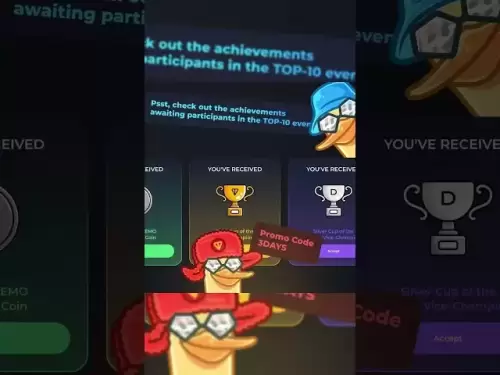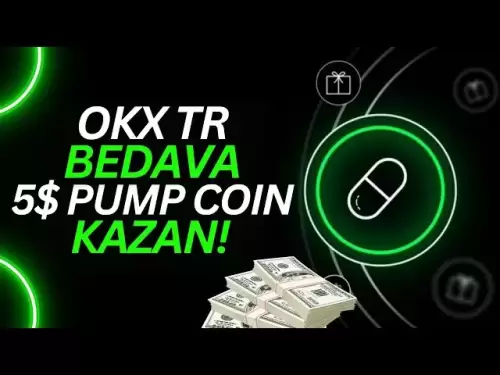-
 Bitcoin
Bitcoin $117400
-0.46% -
 Ethereum
Ethereum $3768
0.60% -
 XRP
XRP $3.551
2.09% -
 Tether USDt
Tether USDt $1.000
0.00% -
 Solana
Solana $203.2
11.30% -
 BNB
BNB $770.9
1.92% -
 USDC
USDC $0.9999
0.01% -
 Dogecoin
Dogecoin $0.2709
-0.02% -
 Cardano
Cardano $0.9024
4.49% -
 TRON
TRON $0.3139
0.60% -
 Hyperliquid
Hyperliquid $45.60
-1.41% -
 Stellar
Stellar $0.4730
-1.34% -
 Sui
Sui $4.025
2.15% -
 Chainlink
Chainlink $19.79
2.19% -
 Hedera
Hedera $0.2724
-2.39% -
 Avalanche
Avalanche $25.93
3.05% -
 Bitcoin Cash
Bitcoin Cash $524.0
-1.83% -
 Shiba Inu
Shiba Inu $0.00001558
0.50% -
 Litecoin
Litecoin $116.7
-0.30% -
 UNUS SED LEO
UNUS SED LEO $8.996
0.00% -
 Toncoin
Toncoin $3.334
1.83% -
 Polkadot
Polkadot $4.506
0.34% -
 Uniswap
Uniswap $10.99
4.83% -
 Ethena USDe
Ethena USDe $1.001
0.03% -
 Pepe
Pepe $0.00001461
3.17% -
 Monero
Monero $320.3
-1.01% -
 Bitget Token
Bitget Token $4.935
0.36% -
 Dai
Dai $0.9998
0.00% -
 Aave
Aave $322.4
-1.25% -
 Bittensor
Bittensor $455.6
9.33%
How to create an NFT on the blockchain?
Create your NFT by choosing a blockchain, setting up a wallet, selecting a marketplace, and minting your digital asset with metadata and royalties.
Jul 20, 2025 at 10:21 pm
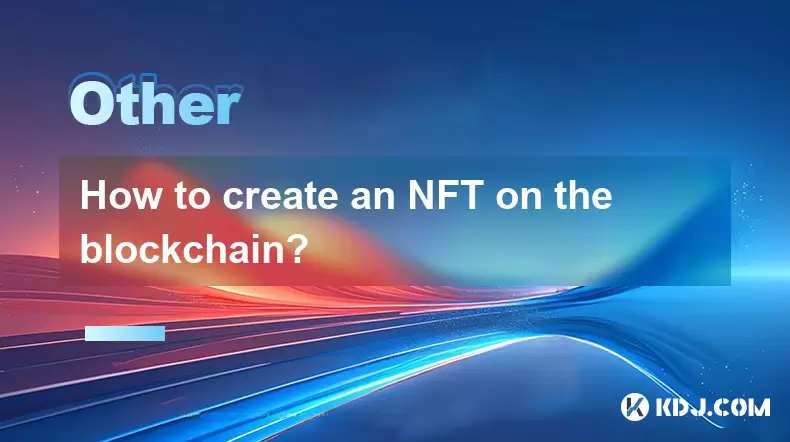
Understanding the Basics of NFT Creation
Before diving into the technical steps, it is essential to understand what an NFT (Non-Fungible Token) is. An NFT represents a unique digital asset stored on the blockchain, typically using Ethereum or other smart contract platforms. Each NFT contains distinct information that makes it irreplaceable and non-interchangeable. This uniqueness is what gives NFTs value in digital art, collectibles, virtual real estate, and more.
To create an NFT, you need to mint it on a blockchain. The process involves uploading a digital file (like an image, audio, or video), adding metadata, and recording it as a token on the blockchain. This token is then owned by a wallet address and can be bought, sold, or transferred.
Choosing the Right Blockchain Platform
The blockchain platform you choose will affect the cost, speed, and reach of your NFT. The most popular blockchain for NFT creation is Ethereum, due to its mature ecosystem and support from major marketplaces like OpenSea, Rarible, and Mintable. However, other blockchains such as Binance Smart Chain, Solana, and Tezos are gaining popularity due to lower transaction fees and faster processing times.
Each blockchain has its own token standards. For example, Ethereum uses ERC-721 and ERC-1155, while Binance Smart Chain uses BEP-721 and BEP-1155. These standards define how NFTs behave and interact with smart contracts.
When selecting a blockchain, consider the following:
- Transaction fees (gas fees)
- Marketplace compatibility
- Community and user base
- Environmental impact
Setting Up a Digital Wallet
To interact with the blockchain, you need a digital wallet that supports NFTs. MetaMask is the most widely used wallet for Ethereum-based NFTs. Other options include Trust Wallet, Coinbase Wallet, and WalletConnect-compatible wallets.
Setting up a wallet involves the following steps:
- Download and install the wallet app or browser extension
- Create a new wallet and securely store the recovery phrase
- Fund the wallet with cryptocurrency (e.g., ETH for Ethereum) to pay for gas fees
- Connect the wallet to your chosen NFT marketplace
Ensure that your wallet is compatible with the blockchain you selected. For instance, if you're using Solana, you may need to use Phantom Wallet instead of MetaMask.
Selecting an NFT Marketplace
Once your wallet is ready, choose an NFT marketplace where you can upload and mint your NFT. Some of the most popular platforms include:
- OpenSea
- Rarible
- Foundation
- LooksRare
- Blur
Each platform has its own interface and minting process, but most follow a similar flow:
- Connect your wallet
- Upload your digital file
- Add metadata (name, description, properties, etc.)
- Set royalties (if applicable)
- Mint the NFT by paying gas fees
Some platforms offer lazy minting, where you can list your NFT without paying gas fees upfront. The fees are instead paid by the buyer when the NFT is sold.
Creating and Minting the NFT
Now that your wallet is connected and you're on the marketplace, it’s time to create your NFT. Follow these steps carefully:
- Click on the 'Create' or 'Mint' button
- Upload your digital file (image, audio, video, etc.)
- Fill in the NFT details: name, description, properties, levels, and stats if applicable
- Choose the blockchain and collection where your NFT will reside
- Set the number of copies (1 for unique NFTs or more for editions)
- Adjust the royalties percentage for future sales
- Review the details and click 'Mint'
- Approve the transaction in your wallet and pay the gas fee
After the transaction is confirmed, your NFT will be live on the blockchain and visible in your wallet and the marketplace.
Post-Minting Actions and Considerations
Once your NFT is minted, it’s important to manage it properly. You can choose to:
- List it for sale at a fixed price
- Create an auction
- Transfer it to another wallet
- Burn it (if you no longer want it)
Additionally, consider promoting your NFT through social media, Discord communities, or NFT newsletters to attract potential buyers. Always keep your wallet secure and never share your private keys or recovery phrases.
Frequently Asked Questions
Q: Can I create an NFT without paying gas fees?
A: Yes, some platforms like OpenSea and Rarible offer lazy minting, which allows you to list your NFT without paying gas fees upfront. The fees are covered by the buyer when the NFT is sold.
Q: What file formats are supported for NFT creation?
A: Most platforms support common formats such as PNG, JPEG, GIF, MP4, MP3, and GLB for 3D models. File size limits vary by platform, usually ranging from 30MB to 100MB.
Q: How do I prove ownership of my NFT?
A: Ownership is verified through your wallet address on the blockchain. When you mint an NFT, it is linked to your wallet address, and only the owner of that wallet can transfer or sell the NFT.
Q: Can I edit my NFT after it's minted?
A: Once an NFT is minted on the blockchain, the metadata and file cannot be changed. However, some platforms allow you to update certain attributes if the smart contract was designed to support that functionality.
Disclaimer:info@kdj.com
The information provided is not trading advice. kdj.com does not assume any responsibility for any investments made based on the information provided in this article. Cryptocurrencies are highly volatile and it is highly recommended that you invest with caution after thorough research!
If you believe that the content used on this website infringes your copyright, please contact us immediately (info@kdj.com) and we will delete it promptly.
- MoonBull's Whitelist Mania: Your Last Shot at 100x Crypto Gains?
- 2025-07-22 10:30:12
- Meme Coins in 2025: Explosive Gains or Fading Fad?
- 2025-07-22 10:30:12
- Kim Keon-hee Crypto Probe: Scandal Rocks South Korea's Political Scene
- 2025-07-22 10:50:12
- ETH Holders in Profit: Value Surge Fuels Bullish Sentiment
- 2025-07-22 09:30:13
- NEAR Protocol's AI Leap: Double-Digit Gains and Future Potential
- 2025-07-22 09:30:13
- Cryptos, Meme Coins, Buy Now: Riding the Wave of Hype
- 2025-07-22 08:30:13
Related knowledge
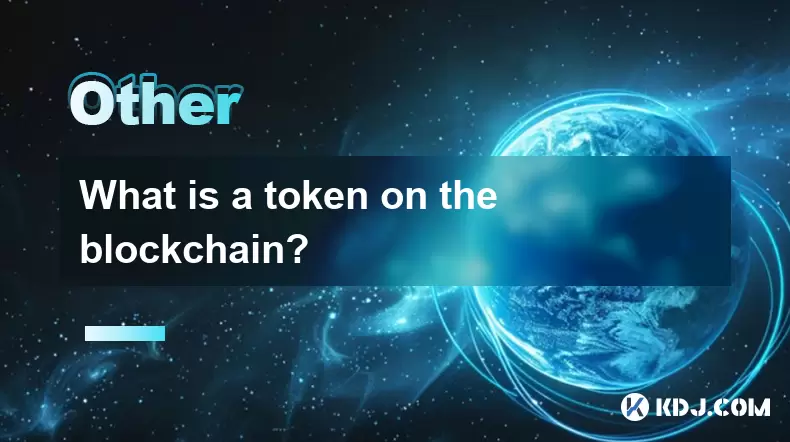
What is a token on the blockchain?
Jul 21,2025 at 07:00am
Understanding the Concept of a TokenIn the realm of blockchain technology, a token is a digital representation of an asset or utility that exists on a...
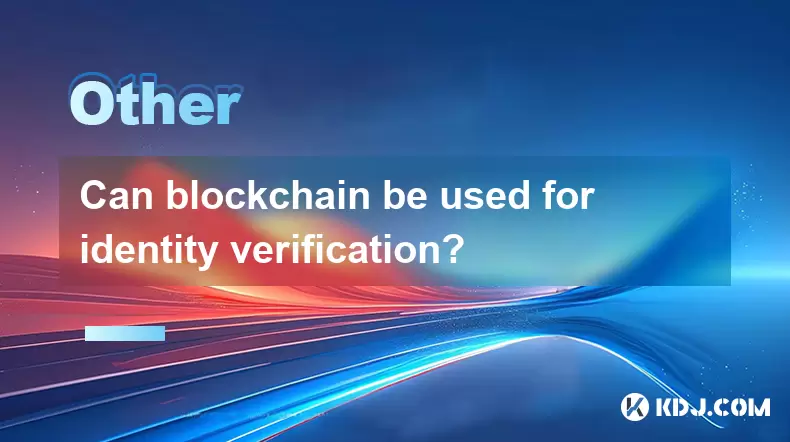
Can blockchain be used for identity verification?
Jul 18,2025 at 02:14pm
Understanding Identity Verification in the Digital AgeIn the modern digital landscape, identity verification has become a critical component for ensur...
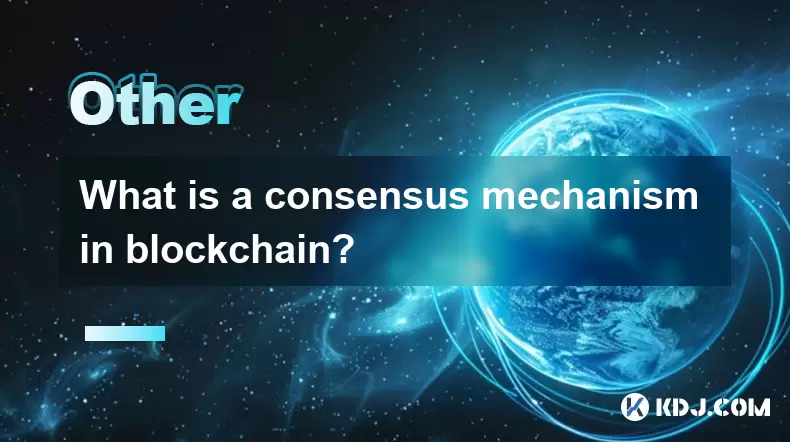
What is a consensus mechanism in blockchain?
Jul 21,2025 at 03:01am
Understanding the Basics of Consensus MechanismsA consensus mechanism is a critical component of any blockchain network. It refers to the process by w...
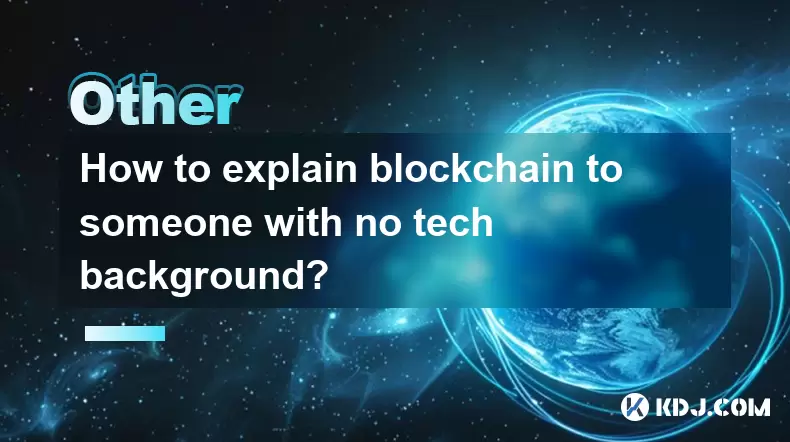
How to explain blockchain to someone with no tech background?
Jul 18,2025 at 11:08pm
Understanding the Basics of BlockchainTo explain blockchain to someone with no tech background, it's essential to start with simple analogies and avoi...
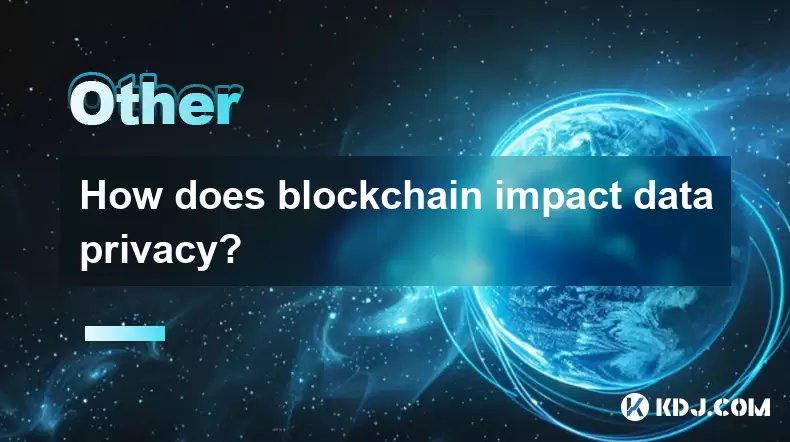
How does blockchain impact data privacy?
Jul 21,2025 at 02:21pm
Understanding the Role of Blockchain in Data PrivacyBlockchain technology, originally developed as the underlying infrastructure for cryptocurrencies ...
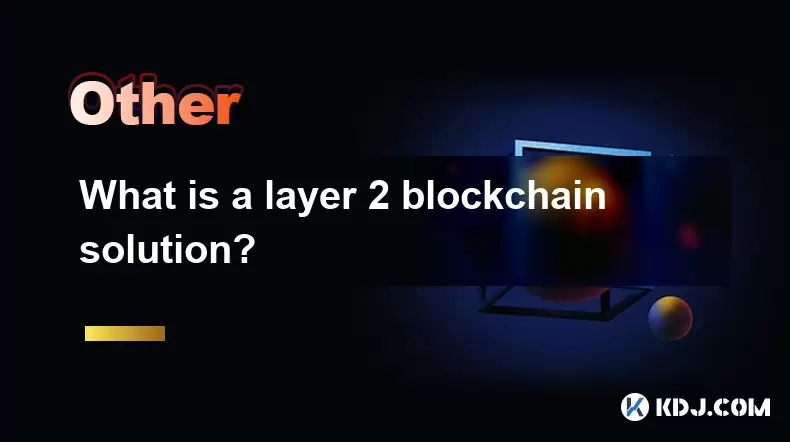
What is a layer 2 blockchain solution?
Jul 20,2025 at 01:42am
Understanding the Concept of Layer 2 BlockchainA layer 2 blockchain solution refers to a secondary framework or protocol built on top of an existing b...

What is a token on the blockchain?
Jul 21,2025 at 07:00am
Understanding the Concept of a TokenIn the realm of blockchain technology, a token is a digital representation of an asset or utility that exists on a...

Can blockchain be used for identity verification?
Jul 18,2025 at 02:14pm
Understanding Identity Verification in the Digital AgeIn the modern digital landscape, identity verification has become a critical component for ensur...

What is a consensus mechanism in blockchain?
Jul 21,2025 at 03:01am
Understanding the Basics of Consensus MechanismsA consensus mechanism is a critical component of any blockchain network. It refers to the process by w...

How to explain blockchain to someone with no tech background?
Jul 18,2025 at 11:08pm
Understanding the Basics of BlockchainTo explain blockchain to someone with no tech background, it's essential to start with simple analogies and avoi...

How does blockchain impact data privacy?
Jul 21,2025 at 02:21pm
Understanding the Role of Blockchain in Data PrivacyBlockchain technology, originally developed as the underlying infrastructure for cryptocurrencies ...

What is a layer 2 blockchain solution?
Jul 20,2025 at 01:42am
Understanding the Concept of Layer 2 BlockchainA layer 2 blockchain solution refers to a secondary framework or protocol built on top of an existing b...
See all articles
























